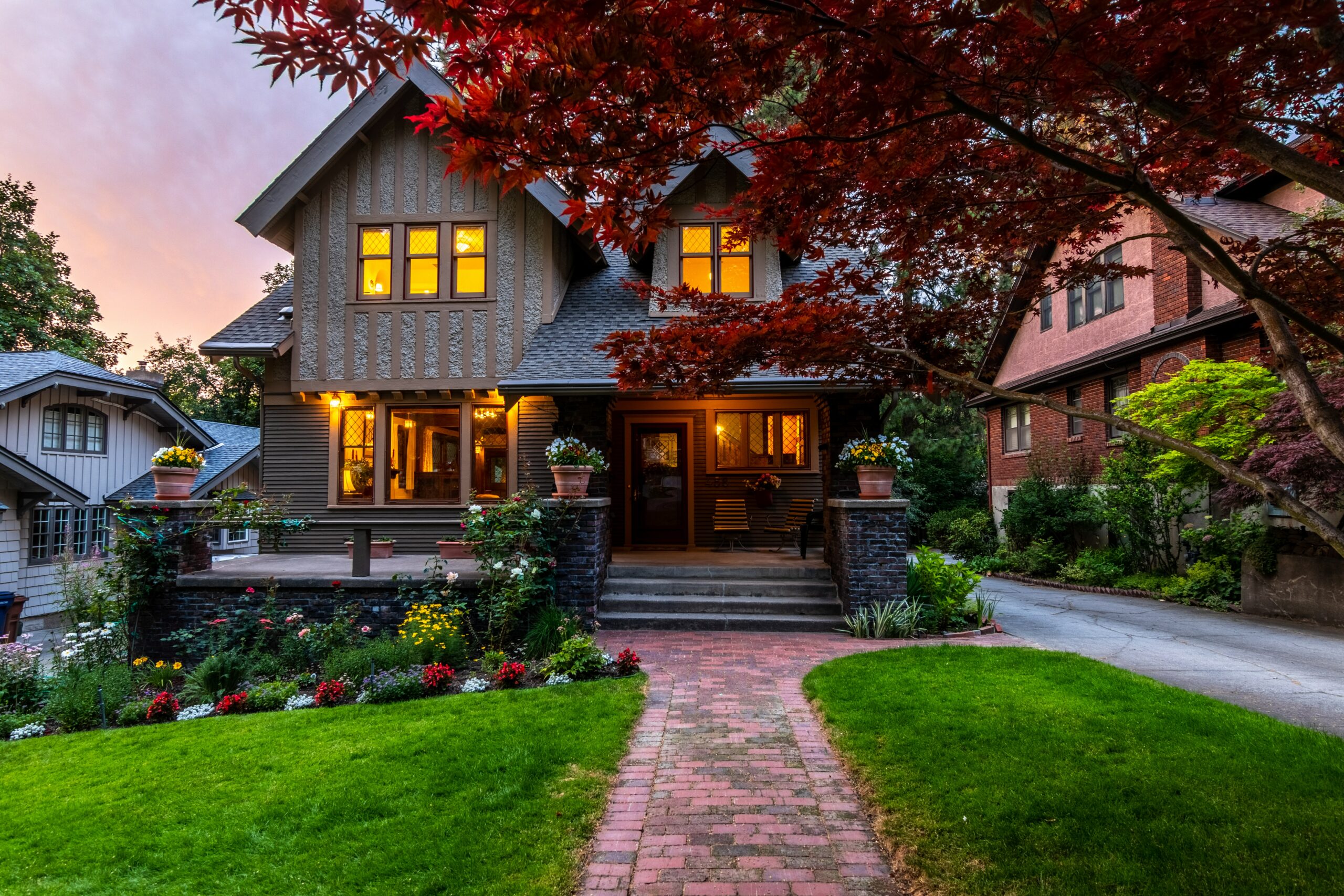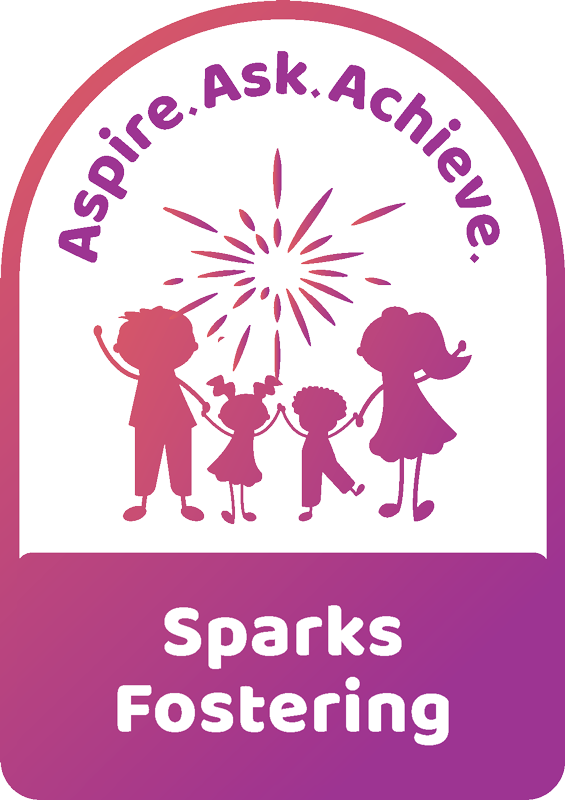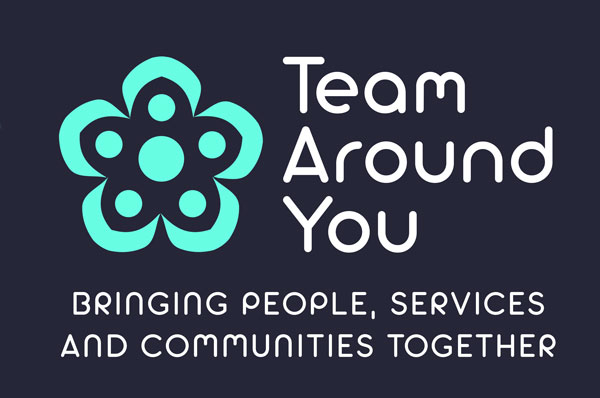Safer Care Plans and Checks
The Sparks Fostering Safer Care Plans and checks includes assessments of:
– Suitability of the home
– Health and safety in the home
– Fire safety
– Family pets
– Vehicle safety
– Household and child specific safer care plans

Suitability of the home
Space in the home
Describe the layout and space in the fostering home (internally and externally).Is there sufficient space in the home for the child to sleep, store clothes, bikes and other items, study, read, watch TV? When and where would the family spend time together?
Is there space for wheelchair use or other adaptations if required?
Bedroom space
List who sleeps in each bedroom and their ages.In the foster home, each child over the age of three should have their own bedroom. Rooms can only be shared if the children agree to it. The fostering family’s own children should have been sharing rooms (voluntarily) prior to the fostering application and it should be reasonably expected that the children will continue sharing rooms in the long term if the ability to foster is dependent upon it.
If it is proposed that children looked after should share a bedroom, it has to be agreed by the children’s social worker.
Before offering a placement for a child to share bedrooms, Sparks Fostering social workers take into account any potential for bullying, any history of abuse or abusive behaviour, the wishes of the children concerned and all other pertinent facts. The decision making process and outcome of the assessment are recorded in writing where bedroom sharing is agreed.
Bedroom and household décor
How are the spare bedrooms currently decorated? What adaptations could be made for the child (e.g. bedding, wallpaper, etc.). Are there lots of family pictures around the home? If so, when would the child’s pictures be included?Lifting
Does the household have any lifting equipment? Are the foster carers prepared to install lifting equipment if required to do so? Are any household members trained in lifting and/or is anyone interested in being trained in the subject? Lifting would only be appropriate for foster carers who are willing to care for children with additional physical needs.Resident specific adaptations: Are there any other adaptations or needs that have been put in place for residents with additional needs?
Health and safety in the fostering home
Home and contents insurance
All original certificates must be viewed by a social worker. The social worker will record the date of the check, the name of the policy owner(s), the date of expiry of the check and any other relevant information on the certificate. Foster carers must have home and/or contents insurance. Also, they must notify their insurer that they have become foster carers: Failure to inform insurers may void the insurance.Gas safety check
All fostering homes are required to have gas safety checks.Chimney sweep certificate
All homes with a chimney (even if the chimney isn’t used) are required to have a chimney sweep certificate.First aid kit
Every fostering home is required to have a first aid kit.General presentation of the home
The foster home should be warm, adequately furnished and decorated, maintained to a good standard of cleanliness and hygiene and in good order throughout. Outdoor spaces which are part of the premises should be safe, secure and well maintained. Foster homes should be free of avoidable hazards, in keeping with family life. Any identified avoidable hazards should be removed as is consistent with a family home. Consider if there are specific needs or adaptations to meet the needs of residents who are in the home, or may join the home in the future.Temperature in the home
The temperature of living spaces in the home should be over 18°C. The temperature in bedrooms can be a little lower.Electrical safety
Wires should not be exposed. Socket covers should not be used. And cables leading to potentially dangerous items (such as kettles) should be out of reach of younger children.Access to windows
Where there are windows that could be reached by children, the window openings should be restricted so the child couldn’t accidentally fall out. Access to windows and windowsills should be reduced wherever possible, for example by moving furniture that is placed next to the window.Sharp edges and low glass
If there is potential for children to run into glass or sharp edges, steps should be taken wherever possible to reduce the risk of that happening.Cord restrictors for blinds
If blinds have cords, the cords should be secured in order to prevent accidental strangulation.Gaps between banister spindles
It should not be possible to pass a 10cm (4 inches) sphere through the gaps between spindles. If the spindles are spaced out too far, then the stair rail will be weakened, and the staircase may pose a danger to children who can fit in between the gaps.Kitchen supervision, sharps, kettles
Dangerous items, such as knives and detergents, should be moved out of the way or secured so that children can’t access them. Children should not be left unattended in the kitchen.Chest freezers or other lockable cabinets
Are there any spaces in the home where a child could become trapped?Storage of detergents, alcohol, tobacco, matches, lighters, medication etc.
All potentially dangerous items should be moved out of reach of children, or stored in locked cabinets.Temperature of water
The temperature of water coming out of taps (baths in particular) should be limited to prevent scalding.Water features
If there are any water features, an explanation must be given as to how children will be kept safe from drowning. Covers are required for ponds, pools and other large containers of water.Large items are secured
Outdoor items such as trampolines must be secured to the ground, to ensure that they don’t topple on the child/ren and/or move in high winds. Tall indoor items such as shelves or tall sideboards should be secured to prevent toppling on the child/ren.Secure boundaries outside the home
If young children play outside the home, there must be secure boundaries to ensure that they do not go missing and others cannot enter the grounds without consent. Open gates between neighbours must be locked, unless the neighbours are assessed as backup carers.Home inspections
The foster home is inspected at least annually, without appointment, by the fostering service to make sure that it continues to meet the needs of foster children.Health and safety in workplaces and other settings
Foster carers have a responsibility to ensure that children are not left in other spaces with evident health and safety breaches.If the foster carer has any concerns about health and safety in any setting, the child must be removed and the child’s social worker and the foster carer’s supervising social worker notified.Any other hazards
If the social worker or foster carer are aware of any other hazards, this must be disclosed and recorded here. If the resident has specific needs, this should also be discussed here.
Fire safety
Fire extinguishers
Every fostering home should have a fire extinguisher in the kitchen. The fire extinguisher(s) should be suitable for oil and/or gas (for homes that use gas) fires.Fire alarms
There should be at least one fire alarm on each floor (ideally, they would be connected). Fire alarms should be tested weekly.- Fire guards
There should be fire guards covering any fireplaces and exposed heating.

Family pets
One assessment is to be carried out for each pet in the home, except for animals such as fish and hamsters. Pictures of the pets are to be included in the family profile.
Dangerous dogs or species
In the UK, it’s against the law to own ‘dangerous dogs’ (Pit Bull Terrier, Japanese Tosa, Dogo Argentino, or Fila Brasileiro). If applicants own any of these types of dog, they will be refused to foster, and police and social care will be notified about the ownership.3 or more dogs
A household with 3 or more dogs will require a specialist pet assessment so that the dynamics between the dogs can be assessed.Behaviour in general
The general behaviour of the pet(s) is to be described, including the development of their personality over time and in different situations. There should be consideration of how the pet would respond to residents of different ages, different behaviour and different needs.Behaviour around children
Clarification to be provided about how much contact the pet has had around children and how the pet responded. The assessor may request that the applicants bring children to the home so that the assessor can see the pets engaging with the children.Response to aggression
How would the animal respond to being handled roughly? How would it respond to shouting, door slamming and other acts of aggression. Would it defend an owner that they felt was being threatened? If so, how would this be managed if the child becomes angry?Response to strangers and visitors
How does the pet respond to strangers in public and to visitors in the home? The assessor will also record how the pet responded to their presence.Response to other animals
How much contact has the pet had with other animals and how has it reacted?Hygiene
How is the pet and its home, toys and other related items kept clean?Food
What does the pet eat and where does it eat? Will the children be involved in feeding?Guarding food and toys
Does the pet show guarding behaviour? The assessor may ask owners to remove food and/or toys from the pet.Access and sleep arrangements
Where does the pet have access to and sleep? If it has access to the child’s bedroom, any related risks are to be addressed.Supervision around children
Would supervision be required around children and if so, how would that be managed?Therapeutic benefit
Pets have the potential for significant therapeutic benefit. Consider how the pet may benefit the healing journey of children looked after.
Vehicle safety
- Driving licence
The assessing social worker is required to record relevant details from the licences of anyone in the household who will be transporting children. - MOT and road tax
Will be checked online by the assessor. - Insurance
Proof of insurance is required for all vehicles in the household that will transport children. - Car seats and seatbelts
Foster carers to confirm that they understand the law and best practice for use of car seats, booster seats and seat belts. Foster carers to also confirm that they will purchase any items if required. Confirm if there are any adaptations to meet specific needs of residents. - Child locks
Foster carers to confirm that they use child locks for rear doors when they are transporting younger children. - Number of passengers
Foster carers to confirm they will adhere to legal restrictions around how many children can be transported in vehicles. Also that children cannot be transported on laps. - Penalty points
The supervising social worker is to be notified of any penalty points and if there is any risk of the driving licence being revoked.
Night lights
There should be torches or night lights in all rooms, which would be needed if the lights don’t work during a night-time fire. If the resident has a mobile phone, that will suffice.
Smoking and drinking in the home
Smoking within the home isn’t permitted. Drinking alcohol may reduce the foster carer’s inhibitions and increase the likelihood of smoking within the home. Foster carers must explain the arrangements within the home if they plan to drink alcohol. Excessive drinking in the presence of children placed is not permitted.Emergency escape plan
The foster carer is required to outline how family members can leave the house in the event of a fire on any floor, in any area of the home. The foster carer(s) are also required to consider the actions to be taken by each household member in the event of a fire.Leaving through upstairs windows
Foster carer to identify if any of the upstairs windows can be used to exit the home.Unlocking main doors
Foster carer to confirm that the escape exits can be unlocked by residents (including younger children and residents with additional needs) if necessary.Outdoor meeting areas
The meeting point outside the home should also be identified.Calling emergency services
Foster carers to confirm they understand ‘get out, stay out, call the fire brigade out’.Fire evacuation from workplaces
Foster carers must ensure that they know the fire escape route of all the places that they visit, including workplaces.
NB. The head office for Sparks Fostering is Deansgate Square, Manchester. The rooms at Deansgate Square are fireproof, so if there is a fire in one part of the building, it is unlikely that evacuation will be required. If evacuation is required for any reason, security will come to the meeting rooms to inform visitors.Briefing household members
Foster carer(s) to outline how and when household members (including children being looked after) will be informed about the fire escape plans.
Firearms assessment
Some fostering applicants (such as farmers) have legitimate use for firearms. Owning firearms doesn’t prevent anyone from becoming foster carers, but their use has to be assessed. Ownership of air rifles is included within this policy.
Details of firearm
Details, including photographs, of firearms to be recorded.Certificate number, issuing authority, and expiry date of firearms certificate
Police will be notified if the household has firearms without certificates.Reasons for keeping firearms
All occasions of use to be explained.Frequency of use
How often are the firearms used?Storage of firearm
The assessor will request to see how the firearm is stored. A description to be provided.Storage of ammunition
The assessor will request to see where ammunition is stored. It should be stored separately to the firearms.
Firearms should always be stored without ammunition.Security precautions taken
Any other security precautions to be listed.Speaking with children about the firearm
Will the child be aware of the firearm? If so, what discussions will be had about the firearms and when? Will the child be allowed to use it?Actions if children gain unauthorised access to the firearm
What would the plan be if the child gains unauthorised access to the firearm?
Safer caring Plan
Household safer care plans should include relevant information about the foster carer’s own experiences during their upbringing, while they have cared for their own children and/or when they have cared for other children.
Household safer carer plans are updated each time a child comes to live in the fostering household (so that it would be child-specific) or if there are any other significant changes (e.g. new members come to live in the home or if the family changes address).
Presented below is an overview of the information required for the Safer Caring Plans.
Welcoming residents to the home
How will the residents be welcomed to the home?
Showing affection
How was the foster carer(s) shown affection when they were young? How have they shown affection to children and adults? How will the resident joining the home be shown affection?
Building attachments
How was the foster carer(s) experience of building attachments through their upbringing? How are attachments built between household members? How will they be built with the children looked after?
Relationship building
How will the children be supported to build healthy family, social and sexual relationships? Consider child development and preparation for independence in the plans.
Appropriate touch
What is the foster carer’s understanding of appropriate touch? How is affection showed between household members currently? Face to face hugs shouldn’t be offered to the child, but if the child initiates a hug, it shouldn’t be refused. How would the foster carer(s) manage inappropriate touch from the resident?
Caring for other children in the household
How will the needs of other children in the household be met? How would the foster carers ‘own’ children be safeguarded and vice versa?
Consequences and discipline
What is the foster carer(s) experiences of consequences and discipline in their upbringing? How will the foster carer(s) support the children to improve their behaviour and adhere to boundaries? Give examples of appropriate boundaries. Confirm that slapping, pushing and other physical consequences won’t be used. Also, negative comments and insults cannot be used. Access to basic human needs, such as food, drinks, sleep, showers and education cannot be restricted.
Children’s Guide
When and how will the children’s guide be explained to the child?
Language
What languages will be spoken in the home? Is the family willing and prepared to care for children who speak different languages?
Meeting linguistic needs
How will the foster carer safeguard children who are not confident in communicating verbally?
Meeting identity needs
How does the foster carer describe their own identity? What is there experience in relation to their own identity and how well do they understand the experiences of people with other identities?
How will the foster carer manage any incidents of discrimination towards the child or from the child towards others?
Confirm if the foster carers would be happy to care of children of diverse ethnicities, religions, gender identities, or sexual identities and explore the foster carer’s understanding of vulnerabilities associated with various identities.
Family Expectations
-
Smoking
Fostering applicants are expected to have a reasonable understanding of the risks of smoking to themselves and to children in their care. Households with a smoker will not be permitted to care for children under the age of 5 years (which rules out parent and child placements), or residents with respiratory problems (including asthma), or potentially residents with other health needs. Smoking households may also be less likely to be offered to care for a child who has come from a non-smoking household.
Passive smoking can impact negatively on the health of those nearby, even if the smoking has stopped (the fumes stay on clothing and fabric for several hours). For these reasons, smoking in the home and family vehicle(s) is not permitted; this applies to guests to the home or vehicles.
Furthermore, carers who smoke may be considered to be poor role models in respect of smoking.
If anyone in the household starts smoking, even if infrequently, the supervising social worker should be notified. If a smoker intends to quit smoking, they are expected to see their GP for smoking cessation advice. 12 months would have to elapse before the foster carer could be considered a non-smoker by Sparks Fostering.
Sparks Fostering social workers may choose to inspect the home and vehicles for indications of smoking.
Sparks Fostering would not restrict placements for foster carers who use e-cigarettes; however, the responsible local authority may have a restrictive policy for e-cigarette use. Sparks Fostering expects that e-cigarettes would not be smoked in the presence of children.
-
Supervision in the home
Explain what is considered to be appropriate supervision in the home. Remember that children we look after should be treated as their peers are usually treated, insofar as possible. CCTV inside the home is only permissible with the consent of the child’s social worker and the Sparks Fostering Registered Manager and it must be justified.
-
Play in the home
What are the foster carer’s experiences of play (inside and outside the home) when they were growing up? What is the foster carer’s experience of playing with children of different ages within the home? Wrestling, and other games with a high level of contact between adults and children looked after are not permissible.
-
Range of food in the home
Describe the typical diet in the home.
How diverse is the diet in the home? How well could they adapt to the needs of children with different tastes and/or cultures?
The social worker may ask to look in cupboards and fridges.
-
Entering bedrooms
All children in the household over the age of 3 should be asked to not enter other bedrooms in their home. Where children are in other people’s bedrooms, doors should be open and adults should guide children out of their bedrooms as soon as possible. If children are playing in each other’s room, there should be regular supervision by an adult. Children can’t share bedrooms without the child’s social worker’s permission.
Adults may only enter children’s bedrooms to help children in cleaning their rooms (if required) or for any safeguarding purposes. Any instances of entering bedrooms should be recorded on the foster carer recordings.
The family should have a policy of knocking and seeking permission before entering anyone’s bedroom.
-
Bathing children
How would foster carer’s ensure children of different ages and abilities are able to bath safely and effectively.
-
Clothing after showering
What are the expectations regarding dress after bathing or showering?
-
Clothing inside the home
What are the current expectations regarding clothing in the home and what would be expected of children looked after? How do expectations vary according to gender and age?
-
Clothing outside the home
What are the expectations regarding clothing outside the home?
-
Supervision outside the home
What would be appropriate supervision outside the home?
-
Social media
See Sparks Fostering ‘Online Safety’ Policy. How will the foster carer manage any risks related to using devices?
-
Bedtimes
Bedtimes should be dependent upon the age and needs of the children. Foster carers should discuss their experience of managing bedtimes for children and give examples of techniques to help children wind down before bed.
-
Safe sleep
Foster carers who are willing to care for babies (including parent and child placements) should know up-to-date safe sleep guidance.
Key points include:
– The safest place for a baby to sleep is on their back in a cot, crib or Moses basket and in the same room with their parents or carers for the first six months.
– Sleeping with a baby on a sofa puts the baby at greatest risk.
– Infants should never share a bed with anyone who is a smoker, has consumed alcohol or has taken drugs (legal or illegal).
– The incidence of SIDS (sudden infant death syndrome) is higher in the following groups: parents who abuse alcohol or drugs, parents who smoke, young mothers with more than one child, premature infants, and those with low birth weight
– There should be no toys, pillows or unnecessary extra items in the cot
– The room should be maintained at a safe temperature and the child shouldn’t be overwrapped or have too many clothes on.
Other relationships
- Guests in the home
What guests would be visiting the home? Will any stay overnight? What information would they be given about the children looked after and how will children be safeguarded? - Use of childminders
Childminders can’t be used for children when they are settling into their new home. After the child has settled, permission will be needed from the children’s social worker before using a childminder. How will childminders be vetted, and the child safeguarded? - Holiday care
How will the child be safeguarded when using holiday care, clubs or other childcare? - The child’s friendships
Children should be encouraged and supported to build safe and appropriate friendships. Provide a description of the carer’s experience of doing this and/or how this will be achieved in future. - Overnight stays
What precautions would be used when agreeing to overnight stays such as sleepovers with friends? Children being looked after should be afforded the same freedoms as other children, so sleepovers shouldn’t be refused without reason. - Contact with the carer’s family
How will foster carers manage any risks associated with contact with the children’s family? - Contact with other professionals
How will the foster carers manage any risks associated with contact between the child and other professionals? - Confidentiality
How will the foster carers balance the child’s right to confidentiality along with the need to share information to meet the needs of the child? What type of information will be shared with household members, backup carers, family friends and other professionals? - Any other concerns
Family or resident specific risks to be included here (if not already addressed above).
Additional resources (Optional)
Information about safety issues from the Child Action Prevention Trust:
Car seats (also see guidance from the Department for Transport).
Toddler safety
Foster carers who are caring for toddlers should read about ‘Toddler safety at home’ on the Baby Centre’ website.
Guidance about caring for pets
Dogs and children: Top tips to keep them safe and happy together. By the Child Accident Prevention Trust.
Government statement about the XL Bully ban
We Teach Pets is a dog separation anxiety trainer and anxious behaviour specialist.
XL Bully ban explained (Blue Cross)
Swim suit colours
This image shows which colours of swim suits are most visible under water.








